
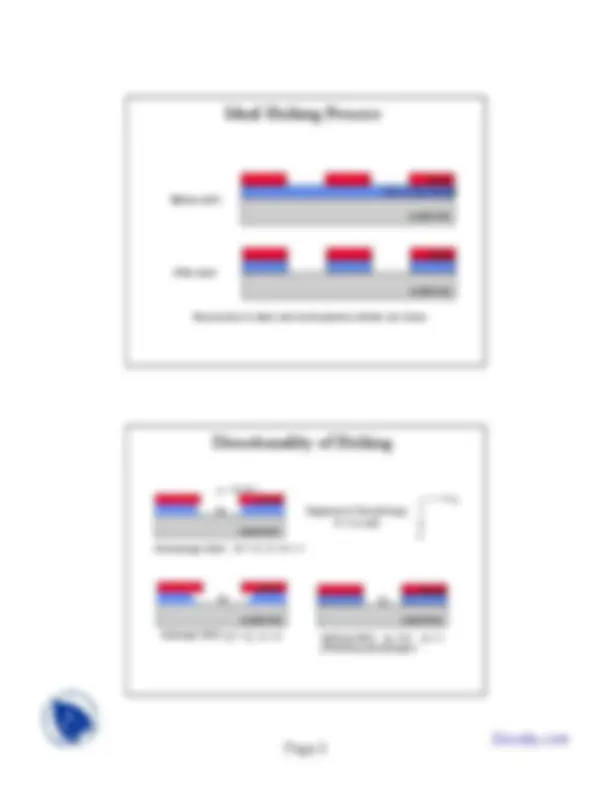
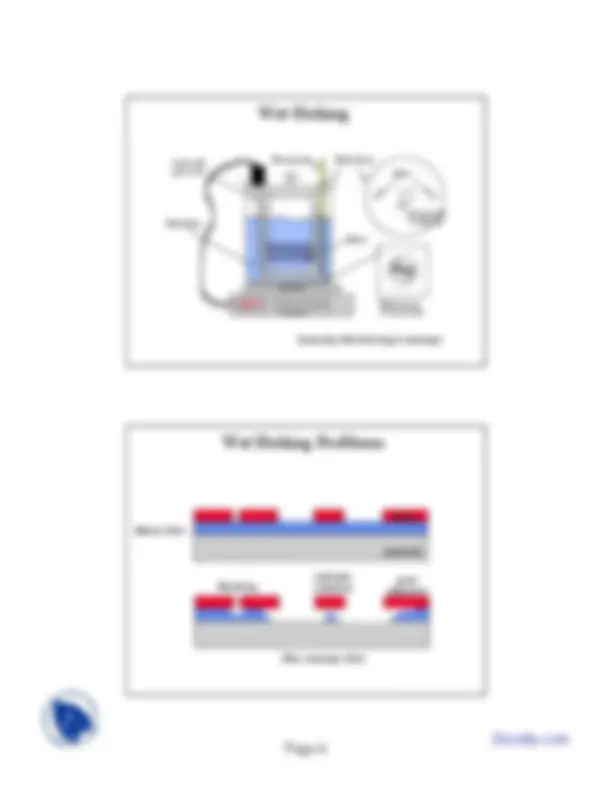
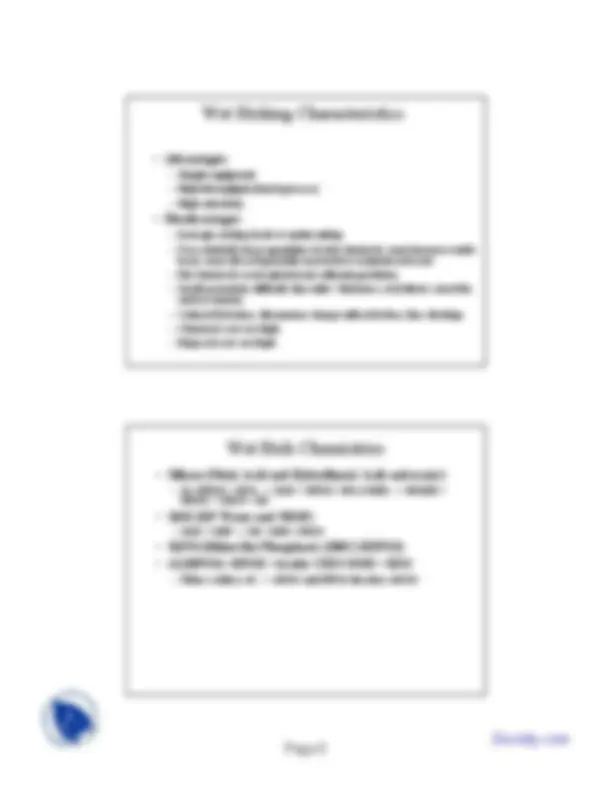
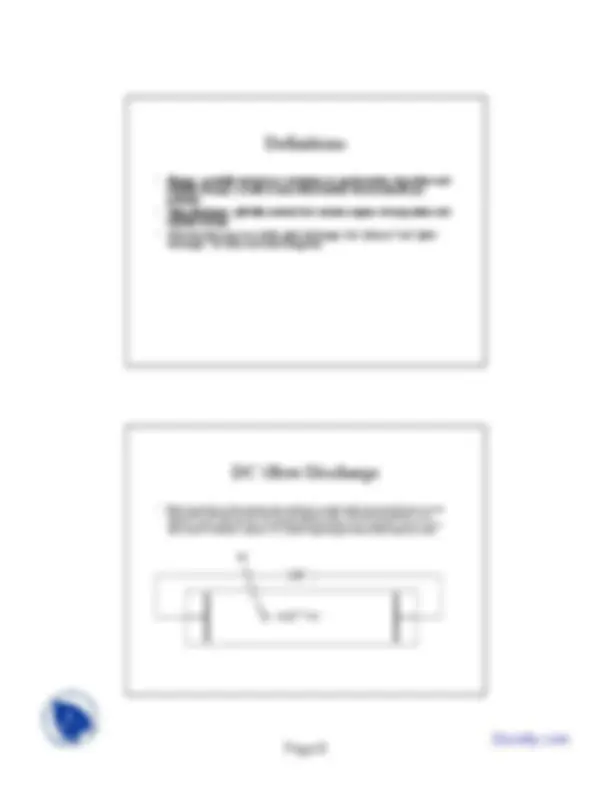
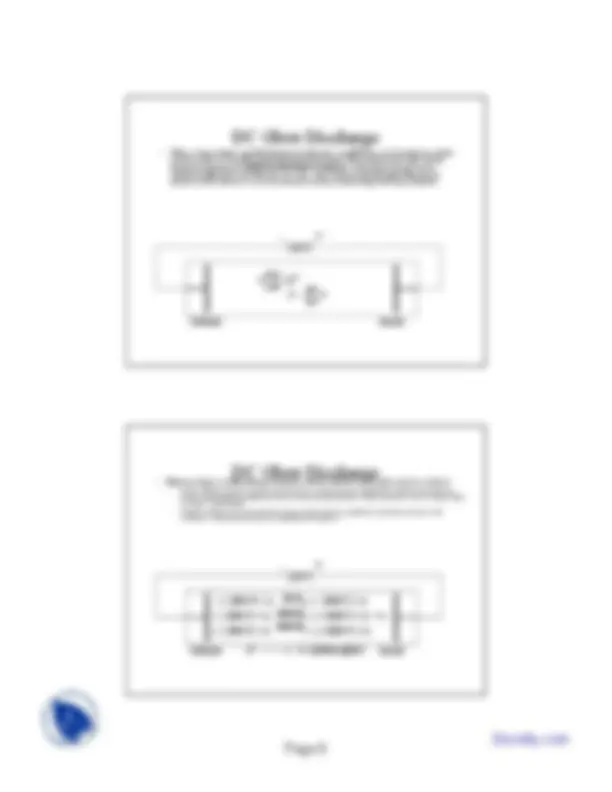
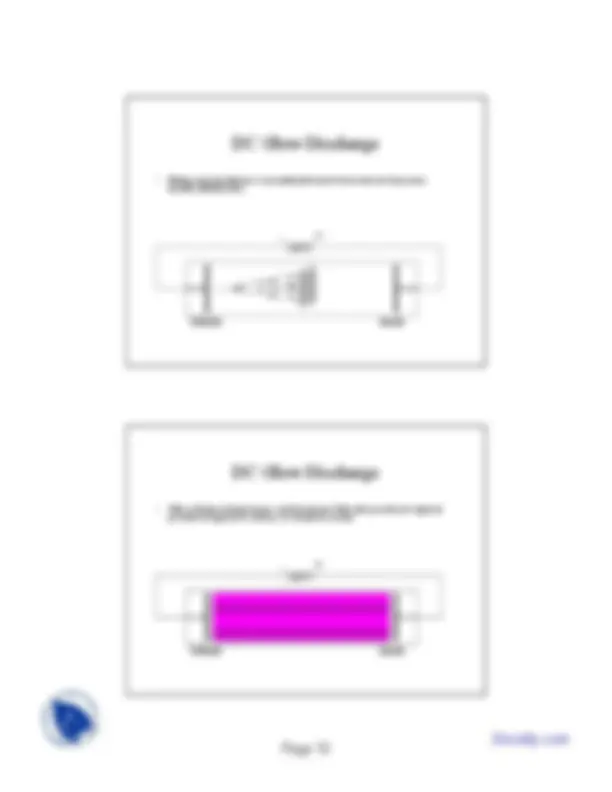
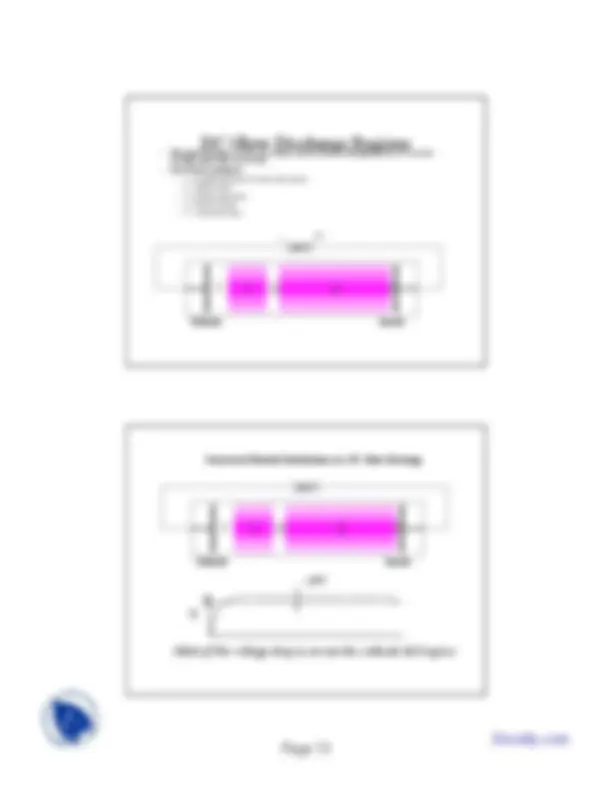
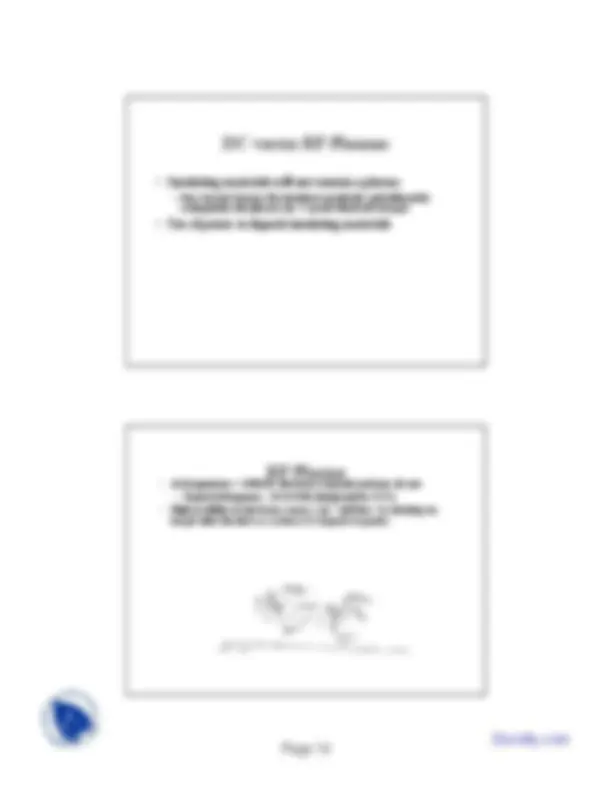
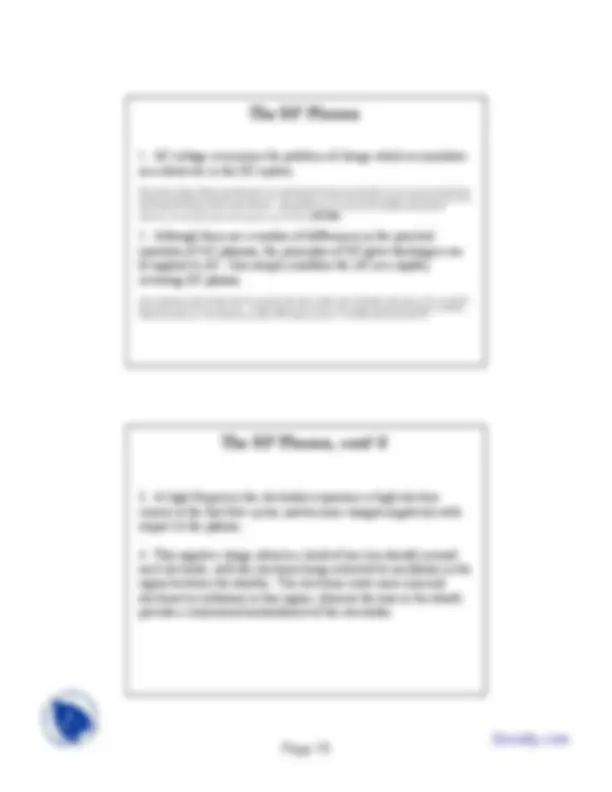
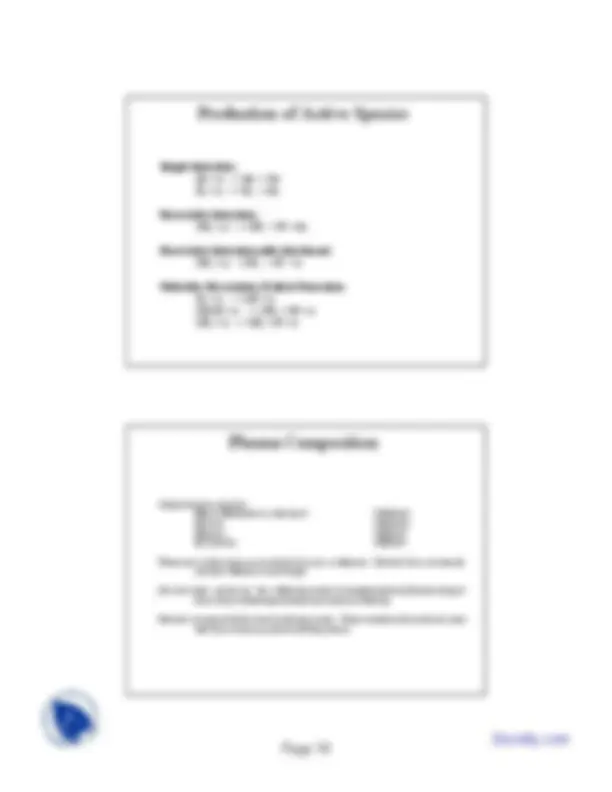
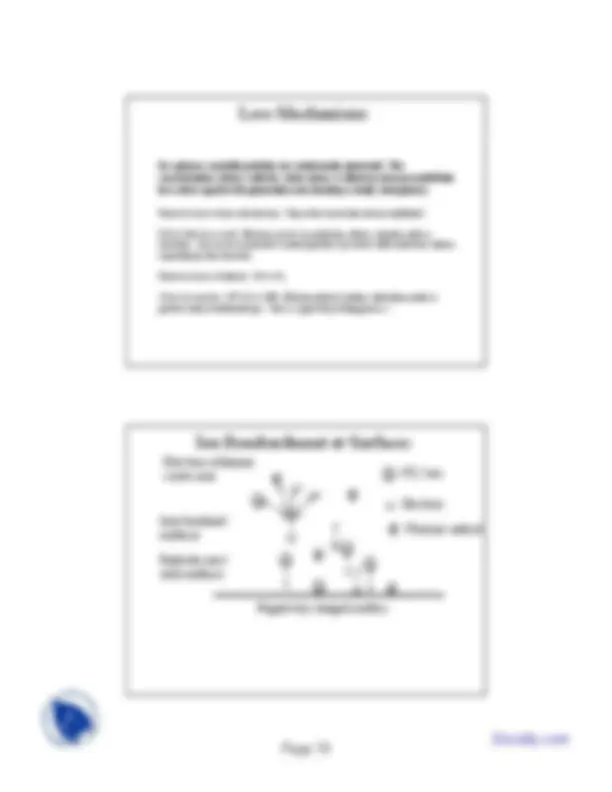
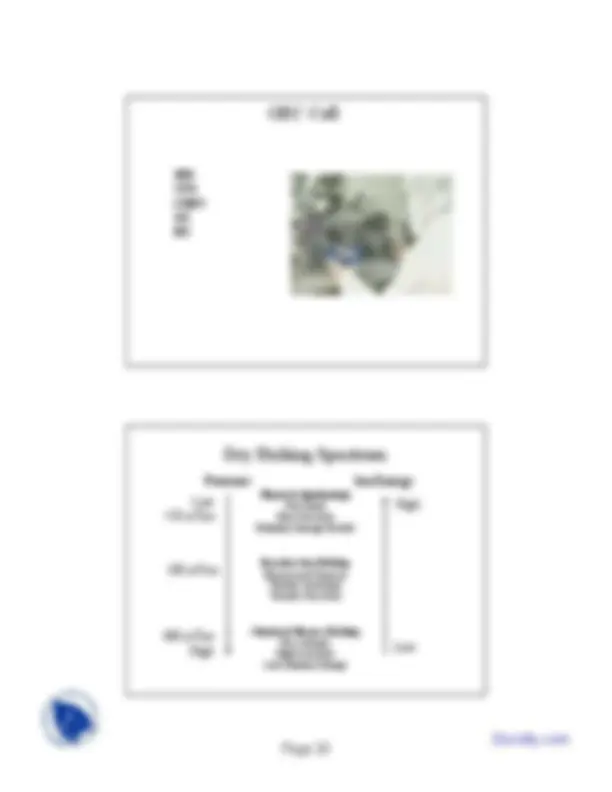
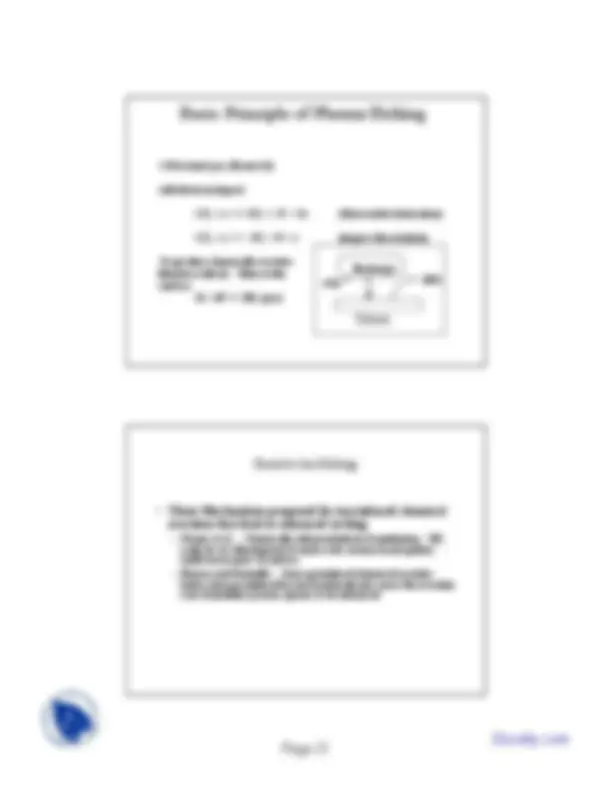
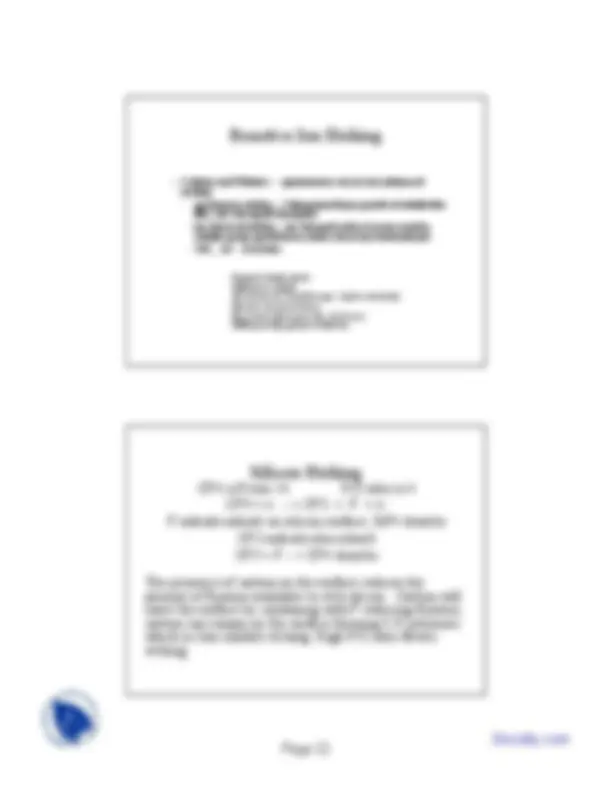
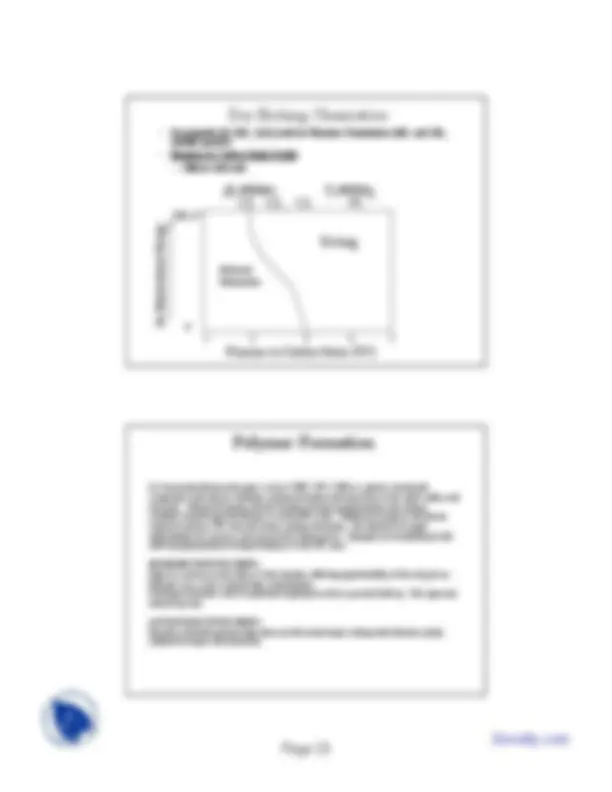
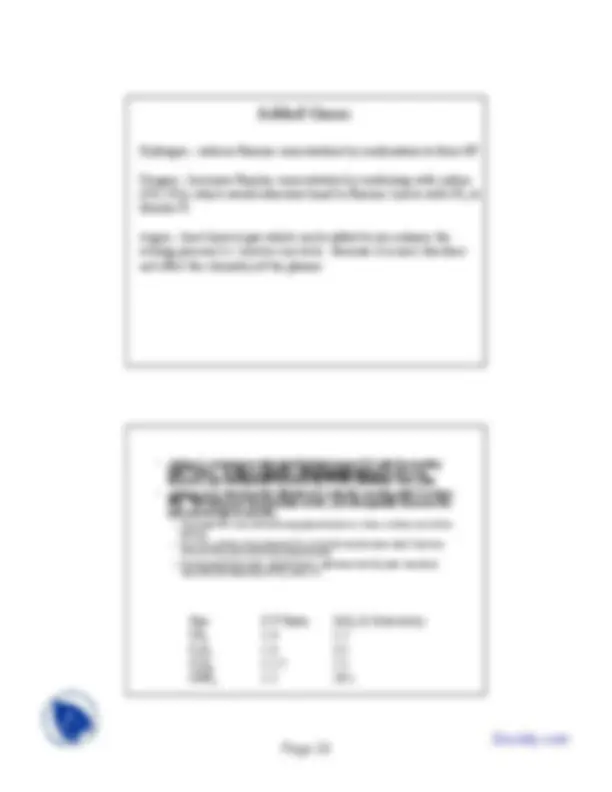
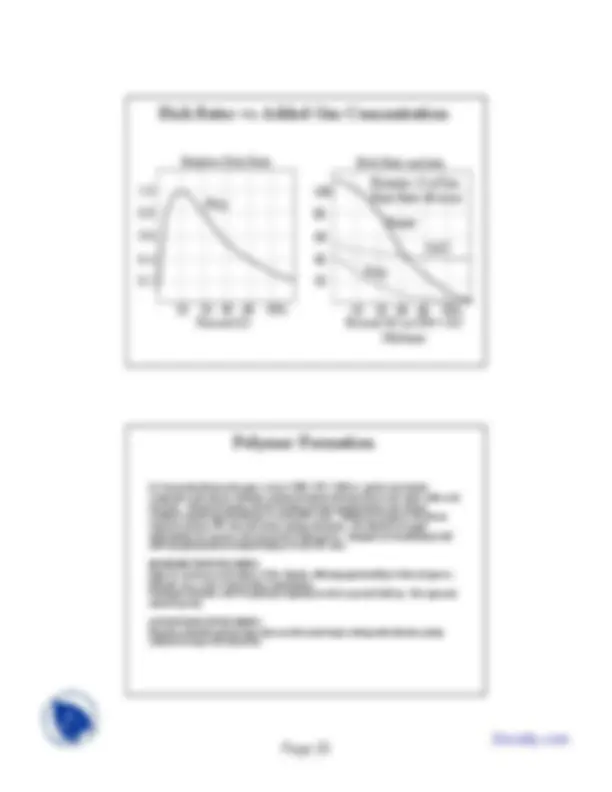
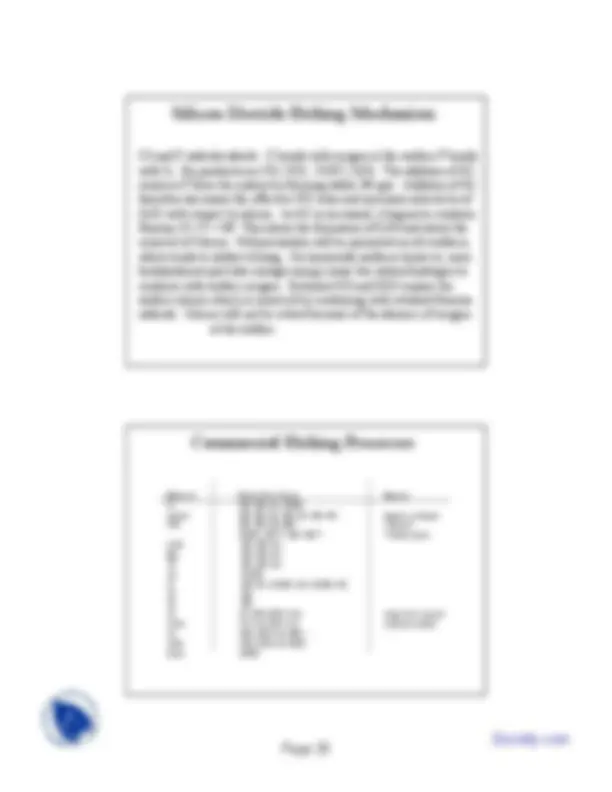
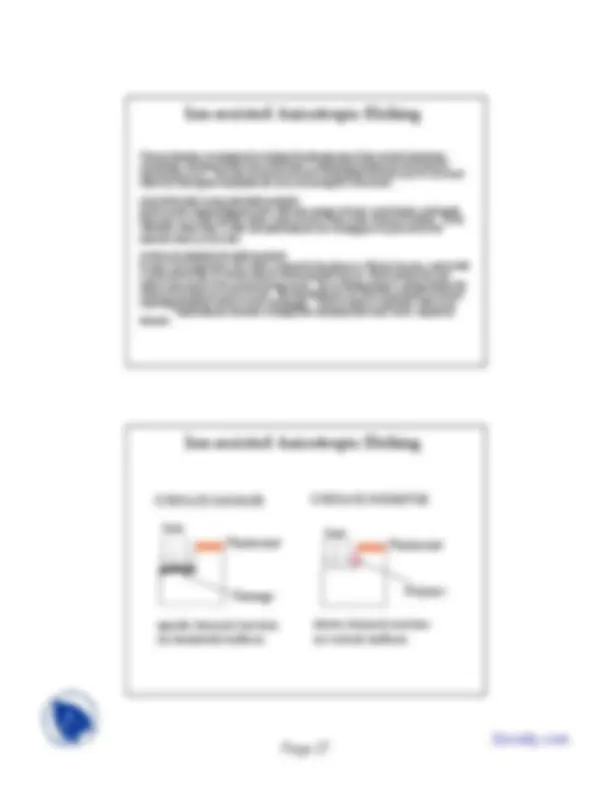
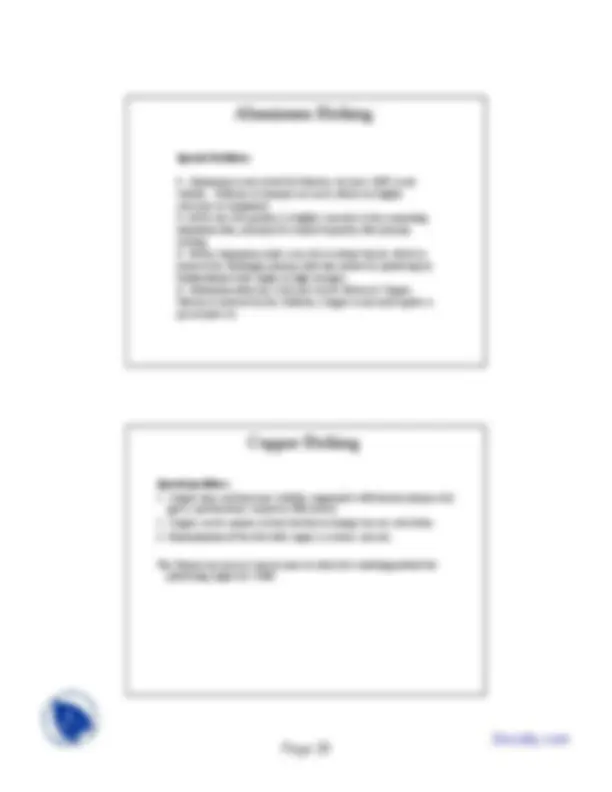
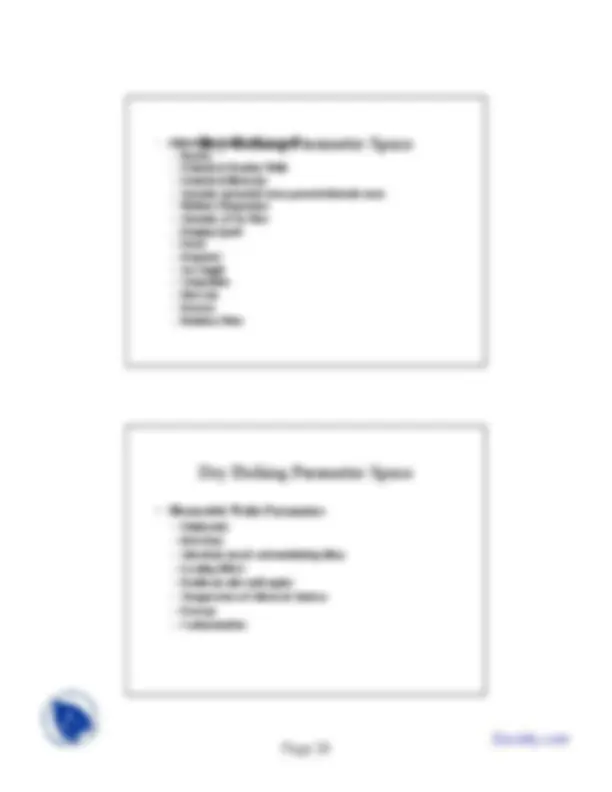
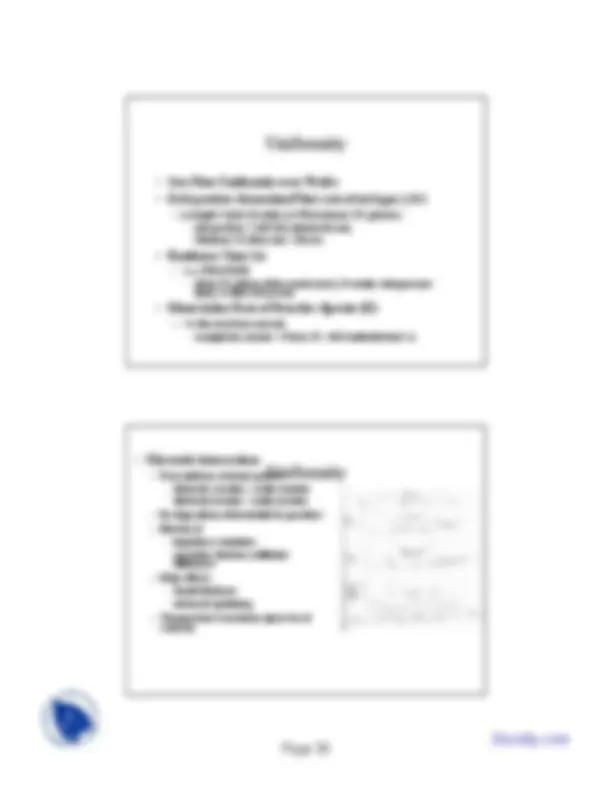
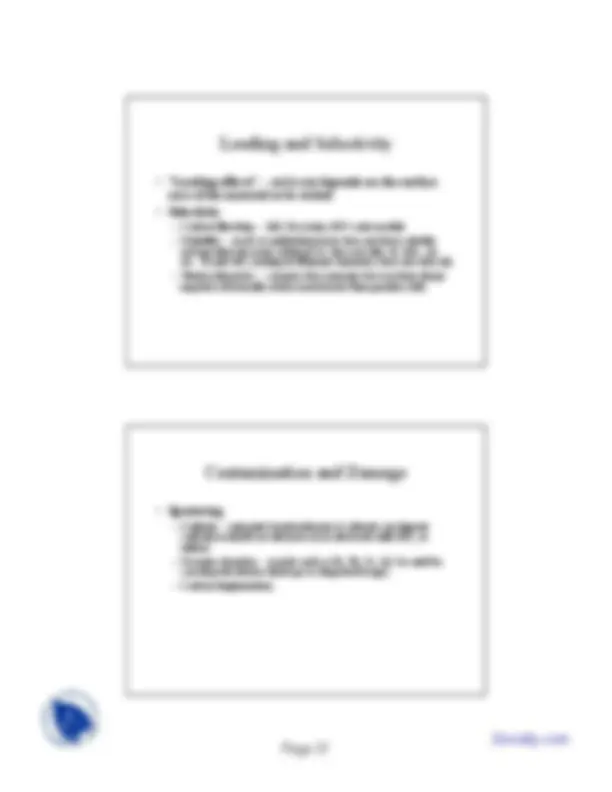
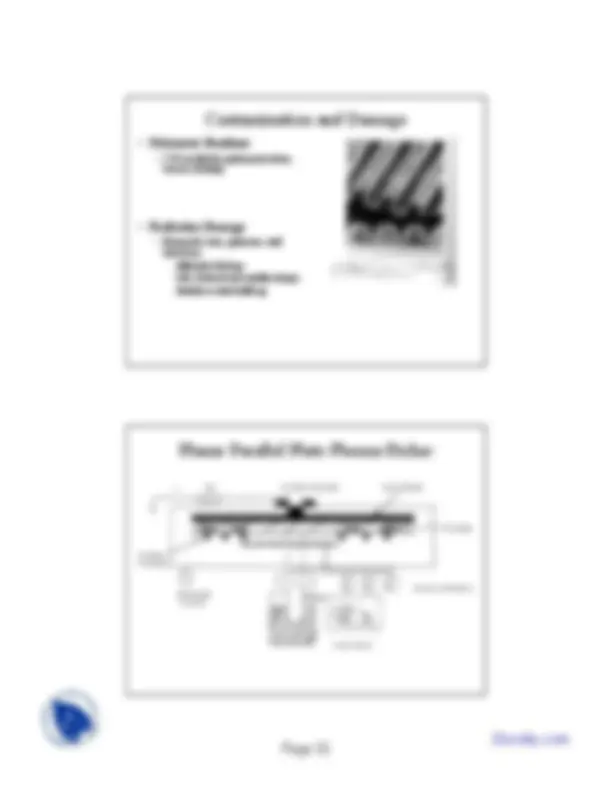
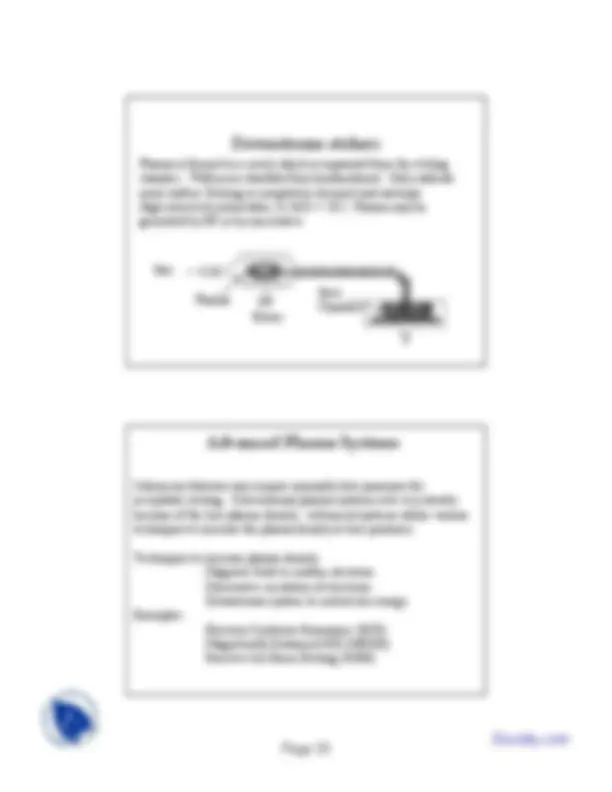


Study with the several resources on Docsity

Earn points by helping other students or get them with a premium plan


Prepare for your exams
Study with the several resources on Docsity

Earn points to download
Earn points by helping other students or get them with a premium plan
Community
Ask the community for help and clear up your study doubts
Discover the best universities in your country according to Docsity users
Free resources
Download our free guides on studying techniques, anxiety management strategies, and thesis advice from Docsity tutors
These are the Lecture Slides of Thin Film Materials Processing which includes Vaporization, Vapor Pressure Curves, Thermal Desorption, Molecular Binding Energy, First Order Desorption, Desorption Rate, Real Surfaces, Diffusion of Gas Particles etc. Key important points are: Plasma Etching, Anisotropic Etch, Ideal Etching Process, Directionality of Etching, Wet Etching, Wet Etching Problems, Wet Etching Characteristics, Wet Etch Chemistries, Dry Etching Characteristics
Typology: Slides
1 / 33

This page cannot be seen from the preview
Don't miss anything!


























Etching - the process by which material is removed from a surface
Mask Layer - Used to protect regions of the wafer surface. Examples are photoresist or an oxide layer
Wet Etching - substrates are immersed in a reactive solution (etchant). The layer to be etched is removed by chemical reaction or by dissolution. The reaction products must be soluble and are carried away by the etchant solution.
Dry Etching - Substrates are immersed in a reactive gas (plasma). The layer to be etched is removed by chemical reactions and/or physical means (ion bombardment). The reaction products must be volatile and are carried away in the gas stream.
Anisotropic - etch rate is not equal in all directions.
Isotropic - etch rate is equal in all directions.
Selectivity - the ratio of etch rate of film to etch rate of substrate or mask.
Aspect Ratio - ratio of depth to width of an etched feature.
Advanced IC Fabrication with small geometries requires precise pattern transfer
Geometry in the < 1.0 micrometer range is common
Line widths comparable to film thickness
Some applications require high aspect ratio
Some materials wet etch with difficulty
Disposal of wastes is less costly
Probe with^ Thermometer glass cover
Wafer Boat
Teflon Stirrer & Guide Plate
Wafers
Controller
Hot Plate
Holes
Plastic Screw for Handle
Teflon Cover
Generally Wet Etching is Isotropic
poor adhesion resist
After Isotropic Etch
Before Etch
substrate
resist
isotropic Blocking undercut
Mask
Dry Ethcing Nomenclature
Barrel Sputter Etching RIE Parallel Plate Plasma Etching
Glow Discharge Methods Downstream Etching ECR Etching
"Beam" Methods
Ion Milling Reactive Ion Beam Etching Ion Beam Assisted Chemical Etching
Ion Beam Methods
Dry Etching
0.2-2.0 Torr 0.01-0.2 Torr 0.1-1.0 Torr 10 -3-10-4^ Torr 10 -4-10-1^ Torr
low high minimal High but adjustable
hv
e -^ A + e - e -
e - e - A + e - e -
Ae +^
e - Ae +^
e - Ae +^
e - Ae +^
e -
Cathode Anode
Cathode Anode
e -
Cathode Anode
Cathode Anode
Current and Potential Distributions in a DC Glow Discharge
Cathode Anode
Various Magnetron Configurations
Various Magnetron Configurations
High Energy Electrons Collide with Gas Molecules and Create New Species
Ionization - An electron is completely removed from a gas molecule or atom, to make a positive ion. (Negative ions are quite rare in plasmas.)
Electronic Excitation - This accounts for the glow. When electrons collide with atoms or molecules, they excite or energize electrons to higher energy levels. When these electrons fall back to lower levels, they emit energy usually in the form of photons of visible light.
Molecular Fragmentation - Electron collisions break up molecules into fragments which as a result have unsatisfied chemical bonding and are chemically reactive. These are called radicals.
Radicals - have no net charge, and therefore are not accelerated by the field or are not attracted by charged particles. They have a long lifetime compared to charged particles.
In a plasma, unstable particles are continuously generated. The concentrations of ions, radicals, active atoms, & electrons increase until their loss rate is equal to the generation rate, forming a steady-state plasma.
Recombination of ions and electrons: They attract each other and are annihilated.
Drift, diffusion to walls : Electrons are lost at conductive surfaces, chamber walls or electrodes. Ions are lost (converted to neutral particles) by contact with conductive surfaces, especially positive electrode.
Recombination of radicals: 2O => O 2
Chemical reaction: 4F + Si => SiF4 (Fluorine radical combines with silicon wafer to produce silicon tetrafluoride gas. This is a typical dry etching process.)
CF
- -
F
F
F
F
Physical (Sputtering) Directional Poor Selectivity Radiation Damage Possible
Reactive Ion Etching Physical and Chemical Variable Anisotropy Variable Selectivity
Chemical Plasma Etching Fast, Isotropic High Selectivity Low radiation Damage